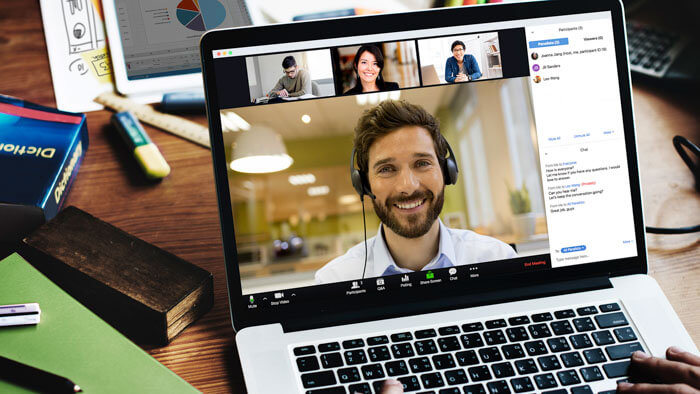Hello everyone! Welcome to the new normal – as it were.
Like many individuals and companies, we here at IST have had our heads spin with all of the challenges in regard to the global pandemic.
To be honest, the last topic I wanted to write about was COVID-19, as currently, it is inescapable through the coverage it is getting.
Rightly so, it is a big deal, but sometimes we want to hear about something positive for a change.
Well, hopefully I can spread that with some news: Industrial Safety Trainers has gone digital!
With all of the physical distancing requirements and limits on social gathering sizes, we have decided to start offering courses through distance learning.
If this is something that has piqued your interest, keep reading, and I’ll share what I have learned so far as a now digital safety trainer.
So firstly, let’s clarify exactly what distance learning means to you.

Distance Learning Basics
Our clients/participants get all of the same knowledge and information that is acquired from attending an in-person session with a bonus – you have the option to stay home!
Pants, however, are still a requirement…
Our training is conducted over the Zoom Meeting platform. All participants share a video stream of the trainer and the entire group. (cameras are mandatory for all. We need to see you’re really engaged with the content.)
Now, after conducting a few of these sessions already, I find that once the little bit of awkwardness of being on a screen with a group, instead of in-person passes – the same group discussion dynamic pops out of the woodwork.
I have actually noticed a few participants appear to be more confident in being in the comfort of their own homes in our discussions.
For those that still are a bit shy, but have questions that they need to be answered, Zoom has a chat feature where these can be brought up. Either for the group as a whole or as a private message to the instructor.

The ability to send a PM is a benefit for those self-conscious or inexperienced workers that feel their question might make them look silly (which it won’t), or for information that may be more confidential in nature.
As for the content of the course, it is shared right to your screen.
I have had people connect with TVs and cameras, laptops, mobile devices, and everything in between. The screen is controlled by the instructor no different than a regular course.
Don’t worry; we still have the ability to share all of our favourite “safety mistakes” photos our participants get a kick out of. Video links are shared in the chat window to open up on your device since you have the link you can re-watch as many times as you want!
So, overall the content is the same. What is slightly different is the experience.
Will it Suit Your Learning Style?
Now depending on your learning style, this is something you may prefer compared to an in-class course.
Some participants may not like it as much, and I totally get that as a trainer. There is something to be said for social contact.
As people, we (usually) like to be around others. Being in your work environment can bring issues to mind because they are in the forefront of your mind, perhaps even in front of you.
As a trainer, I like to see how your organizational safety culture is expressed within your facility. What we have to consider is that going digital also removes workplace distractions.
Colleagues are less likely to interrupt you for “quick questions.” The material and your safety ultimately are in center focus.
As much as we like to be able to see the reactions of others to what is being said and the body language of the presenter, Zoom has been allowing us to replicate that as much as possible.
I just get cheated out of a tour of your workplace.
Our tests (or as I like to call them, “celebrations of knowledge”) are completed through Microsoft Forms, which is quick and easy. We send you the links or share a QR code if you prefer.
Rather than feeling the pressure to keep up to the group, you complete it at your own pace.
The results are instantly populated and easy to share with participants so we can discuss what went well and what needs reinforcing.
I’m not going to lie; the whole set up is pretty slick.

So after reading this, are you intrigued?
What about your employees, is this something that they may like?
Both options for training are great.
It is about sharing information to keep us all safe. What delivery method you choose will depend on your staff and how they best acquire knowledge.
Some people like the digital freedoms this new option offers us, some like the way it’s always been – and that’s okay.
One isn’t better than the other; they are just different.
After reading this, I hope you have food for thought. The world is in unprecedented times, but life has to continue. For that to happen, businesses still have to operate.
We are getting back to our routines while recognizing that there are some new challenges along to way. At the end of the day, we all want to go to work and come home safely.
This is just another tool to help your organization achieve that goal.
Geoff Rowatt | CHRP | Safety Trainer






